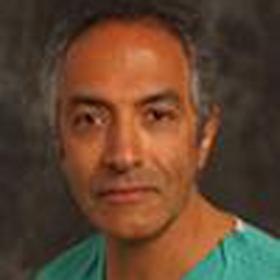Trial using donated eye tissue offers stem cell surgery hope to people with sight problems

People with sight problems could benefit from a surgical trial advance that has been shown to help restore the surface of the eye. Doctors led by Professor Baljean Dhillon (Centre for Clinical Brain Sciences) made the world-first step by carrying out a clinical trial using stem cells from donors to create tissue that was transplanted into patients with a condition called limbal stem cell deficiency (LSCD), which causes blindness that can result from damage to eye from chemicals or heat, or be caused by a disease called aniridia. It leads to scarring and severe vision loss in both eyes as well as chronic pain and redness. LSCD is a significant cause of sight loss – especially in countries where resources and services are limited – but it does not typically respond to standard treatments.
A normal healthy cornea is transparent, but becomes scarred and opaque when specialised stem cells are lost in LSCD. These cornea samples were taken from people who had donated their eyes after death. The team then grew the stem cells – which have the unique ability to transform into other cell types – into tissue ready to be transplanted.
Sixteen patients were split into two groups with both given eye drops and medicines to suppress their immune system to reduce transplant rejection. One group was also given the stem cells. This is the first time that stem cells have been used in this way in a randomised clinical trial – the gold standard scientific method for testing a new treatment. Patients who had received the stem cells showed significant repair of their eyes’ ocular surface – the outermost layer – over 18 months, which was not seen in those who did not receive the treatment. Both the stem cell group and the control group showed improvements in vision, which researchers say warrants further investigation a larger trial.
Baljean Dhillon, Professor of Clinical Ophthalmology at the University of Edinburgh’s Centre for Clinical Brain Sciences, who led the study, said: “The findings from this small study are very promising and show the potential for safe stem cell eye surgery as well as improvements in eye repair. Our next steps are to better understand how stem cells could promote tissue repair for diseases that are extremely hard to treat and if, and how, they could help to restore vision.”
The project, published in STEM CELLS Translational Medicine was funded by UK Stem Cell Foundation, Scottish Enterprise and the Chief Scientist Office, part of Scottish Government Health Directorates.

